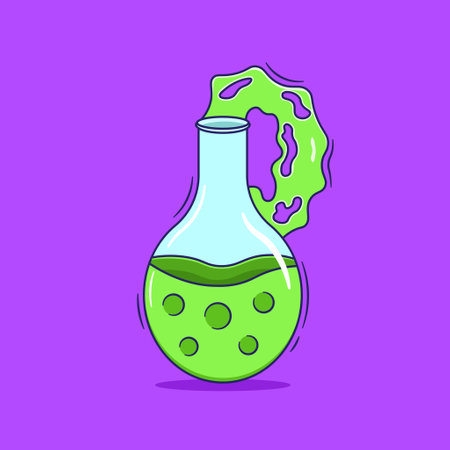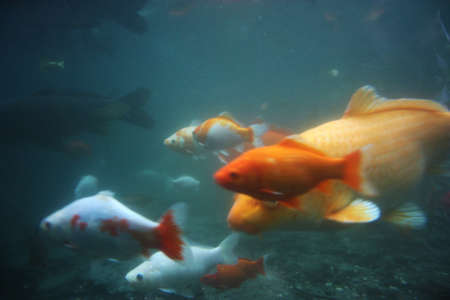Understanding Water Parameters
Before you can tackle common water quality issues in your aquarium, it’s crucial to understand the key water parameters that keep your aquatic environment healthy. In the U.S., hobbyists often monitor several main metrics: pH, ammonia, nitrites, and nitrates. Each plays a unique role in your tank’s ecosystem. pH measures how acidic or alkaline the water is, with most freshwater fish thriving between 6.5 and 7.5, though some species have specific needs. Ammonia is toxic to fish even at low levels and usually spikes from overfeeding or decomposing organic matter. Nitrites, produced as bacteria break down ammonia, are also harmful and indicate that your biological filtration might not be fully established. Nitrates, the end product of this cycle, are less dangerous but can stress fish and fuel algae growth if they climb too high. By regularly testing these parameters and understanding what they mean for your tank’s inhabitants, you’re laying the groundwork for quick intervention and long-term success.
Common Water Quality Problems
When it comes to maintaining a healthy aquarium, both beginners and seasoned hobbyists in the U.S. often run into similar water quality challenges. Whether you’re keeping a freshwater or saltwater tank, certain issues tend to show up time and again. Below, we spotlight some of the most frequent problems aquarists face and set the stage for how to spot them quickly.
Spotlight on Frequent Issues
| Issue | Freshwater Tanks | Saltwater Tanks |
|---|---|---|
| Cloudy Water | Common after new setups or overfeeding; usually due to bacterial bloom or excess debris. | Can result from high dissolved organics or uncycled tanks. |
| Algae Overgrowth | Triggered by too much light, high nutrients (nitrates, phosphates), or inconsistent maintenance. | Especially problematic in reef tanks; linked to poor nutrient export and lighting issues. |
| Foul Odors | Often caused by decaying food, dead plants, or fish waste buildup. | Results from organic matter decomposition, overstocking, or insufficient filtration. |
Understanding What You’re Seeing (and Smelling)
If your tank water looks cloudy, is tinged green, or has an unpleasant smell, these are red flags that something is off balance. These problems not only make your aquarium less enjoyable but can also stress or harm your fish and corals. By recognizing these common signs early—cloudiness that won’t settle, rapid algae growth on glass and decorations, or persistent bad odors—you’ll be in a better position to act fast and restore your tank’s health.

3. Sources of Water Quality Issues
If you’re noticing cloudy water, algae blooms, or stressed fish in your aquarium, it’s time to play detective. Understanding the sources of water quality issues is the first step to a thriving tank. Let’s break down the most common culprits and how they sneak into even the best-intentioned setups.
Overfeeding
It’s easy to want to spoil your fish with extra food, but uneaten food quickly decays and releases harmful ammonia and nitrites into the water. Overfeeding is one of the top reasons tanks develop poor water quality. Stick to a strict feeding schedule and only offer what your fish can consume in a couple of minutes.
Poor Filtration
Your filter is like your aquarium’s liver—it keeps things clean behind the scenes. If your filter isn’t rated for your tank size or isn’t maintained regularly, waste and toxins build up fast. Make sure you clean or replace filter media as recommended and check that the system is running smoothly at all times.
Overcrowding
Too many fish in one tank means more waste than your filter can handle. This leads to spikes in ammonia and nitrite levels, stressing out your aquatic pets. Always research appropriate stocking levels for your tank size and species before adding new residents.
Tap Water Contaminants
Even if your tap water looks clear, it might contain chlorine, chloramines, heavy metals, or phosphates—all of which can harm aquarium life. Always treat tap water with a dechlorinator before adding it to your tank, and consider testing for other contaminants if problems persist.
By understanding these sources, you’ll be better prepared to spot issues early and keep your aquarium environment healthy for both fish and plants.
4. Detecting Problems Early
Spotting water quality issues before they escalate is crucial for a healthy aquarium. Early detection can save your fish, plants, and investment. Here’s how you can recognize trouble and why regular testing should be part of your aquarium routine.
Behavioral Signs in Fish
Fish often show distress through their behavior long before the water looks off. Watch for these common signs:
| Behavior Change | Possible Issue |
|---|---|
| Lethargy or hiding more than usual | High ammonia/nitrite, low oxygen |
| Gasping at the surface | Poor oxygenation, high toxins |
| Loss of appetite | Water chemistry imbalance |
| Darting or scratching against objects | Irritation from toxins or parasites |
| Clamped fins or unusual swimming patterns | Stress from poor water quality |
Visible Tank Conditions
The appearance of your tank can also provide valuable clues about water quality:
- Cloudy water: Indicates bacterial bloom, excess waste, or overfeeding.
- Algae overgrowth: Often a sign of excessive nutrients (nitrates, phosphates) and too much light.
- Moldy or decaying debris: Points to poor maintenance and possible ammonia spikes.
- Unusual odors: Strong smells may mean decaying organics or stagnant conditions.
- Sickly plants: Yellowed leaves or rot suggest chemical imbalances affecting plant health.
The Importance of Regular Testing
No matter how experienced you are, relying on observation alone isn’t enough. Water parameters can shift quickly and silently. Using test kits weekly to monitor levels of ammonia, nitrites, nitrates, pH, and hardness helps catch problems early—long before they impact your aquatic life. Many seasoned aquarists keep a logbook to track changes over time, which makes it easier to spot trends and intervene proactively.
5. Effective Solutions and Maintenance Tips
Maintaining excellent water quality in your aquarium doesn’t have to be complicated, especially with a few practical habits and the right tools. Here’s how American aquarists can keep their tanks thriving and their aquatic pets happy.
Routine Water Changes
One of the most effective ways to control toxins like ammonia, nitrite, and nitrate is by performing regular water changes. Aim for changing 10–25% of your tank’s water each week. Use a gravel vacuum to remove debris from the substrate, which helps limit organic buildup and keeps the ecosystem stable. Always use a dechlorinator when adding tap water to avoid harming your fish.
Filter Maintenance
Your aquarium filter is the heart of your tank’s health. Rinse filter media gently in old tank water every few weeks to remove excess gunk without destroying beneficial bacteria. For American aquarists, brands like Fluval, Marineland, and AquaClear offer reliable filtration systems suitable for various tank sizes and setups.
Monitor Your Equipment
Check that heaters, filters, and air pumps are working properly. Clogged or malfunctioning equipment can lead to sudden water quality issues. Consider using smart plugs or timers for consistent operation—many U.S.-based hobbyists find these tech upgrades helpful for busy schedules.
Product Recommendations
Water conditioners such as Seachem Prime are popular across the U.S., offering an easy way to neutralize chlorine, chloramine, and ammonia during water changes. To boost biological filtration, products like API Quick Start or Tetra SafeStart introduce live bacteria that help stabilize new or stressed tanks.
Test Kits Are Essential
Invest in a reliable liquid test kit (like the API Freshwater Master Test Kit) to regularly check parameters such as pH, ammonia, nitrite, and nitrate levels. Testing weekly empowers you to catch problems early—an essential habit for successful American aquarists.
Consistency Is Key
Set reminders on your phone or calendar for routine tasks. Staying consistent with maintenance not only prevents common issues but also creates a healthier environment where both fish and plants can thrive.
6. When to Seek Professional Help
Even with the best care and regular maintenance, some aquarium water quality issues can be stubborn or puzzling. Knowing when to call in a pro can save your fish, your plants, and your sanity. If you notice persistent problems—such as unexplained fish deaths, chronic algae blooms, recurring cloudy water, or chemical levels that refuse to stabilize despite repeated interventions—it’s time to reach out for expert advice. Local aquarium specialists often have hands-on experience with regional water conditions and can diagnose complex issues that might not be obvious from test results alone.
Many U.S. pet stores, especially those focused on aquatics, offer in-store water testing and troubleshooting sessions. Don’t hesitate to bring a sample of your tank water (in a clean container) along with details about your setup, stock, and maintenance routine. The staff can analyze the results and recommend targeted solutions or products specific to American tap water conditions and local regulations. For larger setups or custom tanks, professional aquarium services are available in most metropolitan areas—they’ll visit your home, assess the situation on-site, and perform advanced diagnostics if needed.
Remember, seeking help isn’t just for emergencies; it’s also a smart move if you’re new to the hobby or planning major changes, like adding sensitive species or upgrading equipment. Building a relationship with local experts not only helps resolve current issues but also sets you up for long-term success in creating a thriving aquatic environment.


